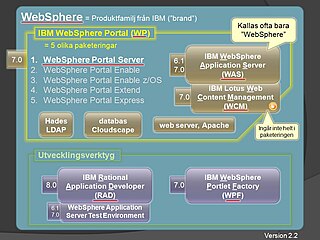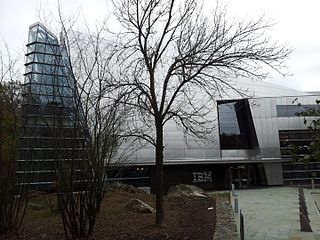Related Research Articles

The IBM Personal Computer is the first microcomputer released in the IBM PC model line and the basis for the IBM PC compatible de facto standard. Released on August 12, 1981, it was created by a team of engineers and designers directed by Don Estridge in Boca Raton, Florida.

An operating system (OS) is system software that manages computer hardware, software resources, and provides common services for computer programs.

In computing, time-sharing is the sharing of a computing resource among many users at the same time by means of multiprogramming and multi-tasking.

Telnet is an application protocol used on the Internet or local area network to provide a bidirectional interactive text-oriented communication facility using a virtual terminal connection. User data is interspersed in-band with Telnet control information in an 8-bit byte oriented data connection over the Transmission Control Protocol (TCP).

A tape drive is a data storage device that reads and writes data on a magnetic tape. Magnetic tape data storage is typically used for offline, archival data storage. Tape media generally has a favorable unit cost and a long archival stability.
Grid computing is the use of widely distributed computer resources to reach a common goal. A computing grid can be thought of as a distributed system with non-interactive workloads that involve many files. Grid computing is distinguished from conventional high-performance computing systems such as cluster computing in that grid computers have each node set to perform a different task/application. Grid computers also tend to be more heterogeneous and geographically dispersed than cluster computers. Although a single grid can be dedicated to a particular application, commonly a grid is used for a variety of purposes. Grids are often constructed with general-purpose grid middleware software libraries. Grid sizes can be quite large.

Deep Blue was a chess-playing expert system run on a unique purpose-built IBM supercomputer. It was the first computer to win a game, and the first to win a match, against a reigning world champion under regular time controls. Development began in 1985 at Carnegie Mellon University under the name ChipTest. It then moved to IBM, where it was first renamed Deep Thought, then again in 1989 to Deep Blue. It first played world champion Garry Kasparov in a six-game match in 1996, where it lost two games to four. In 1997 it was upgraded and, in a six-game re-match, it defeated Kasparov winning three and drawing one. Deep Blue's victory was considered a milestone in the history of artificial intelligence and has been the subject of several books and films.
HCL Notes and HCL Domino are the client and server, respectively, of a collaborative client-server software platform formerly sold by IBM, now by HCL Technologies.

IBM WebSphere refers to a brand of proprietary computer software products in the genre of enterprise software known as "application and integration middleware". These software products are used by end-users to create and integrate applications with other applications. IBM WebSphere has been available to the general market since 1998.

A software release life cycle is the sum of the stages of development and maturity for a piece of computer software. Cycles range from its initial development to its eventual release, and include updated versions of the released version to help improve software or fix software bugs still present in the software.
This article presents a timeline of events in the history of computer operating systems from 1951 to the current day. For a narrative explaining the overall developments, see the History of operating systems.
The Network Computer was a diskless desktop computer device made by Oracle Corporation from about 1996 to 2000. The devices were designed and manufactured by an alliance, which included Sun Microsystems, IBM, and others. The devices were designed with minimum specifications, based on the Network Computer Reference Profile. The brand was also employed as a marketing term to try to popularize this design of computer within enterprise and among consumers.

Mike Cowlishaw is a Visiting Professor at the Department of Computer Science at the University of Warwick, and a Fellow of the Royal Academy of Engineering. He is a retired IBM Fellow, and was a Fellow of the Institute of Engineering and Technology, and the British Computer Society. He was educated at Monkton Combe School and The University of Birmingham.
SHARE Inc. is a volunteer-run user group for IBM mainframe computers that was founded in 1955 by Los Angeles-area users of the IBM 701 computer system. It evolved into a forum for exchanging technical information about programming languages, operating systems, database systems, and user experiences for enterprise users of small, medium, and large-scale IBM computers such as IBM S/360, IBM S/370, zSeries, pSeries, and xSeries. Despite the capitalization of all letters in the name, the official website says "SHARE is not an acronym; it's what we do."
Amanda Elizabeth Chessell is a computer scientist and a Distinguished Engineer at IBM. She has been awarded the title of IBM Master Inventor. She is also a Member of the IBM Academy of Technology.
Proprietary software, also known as non-free software or closed-source software, is computer software for which the software's publisher or another person reserves some licensing rights to use, modify, share modifications, or share the software. It is the opposite of open-source or free software. Non-free software sometimes includes patent rights.

A computer cluster is a set of computers that work together so that they can be viewed as a single system. Unlike grid computers, computer clusters have each node set to perform the same task, controlled and scheduled by software.

Simon Phipps is a computer scientist and web and open source advocate.

An Internet area network (IAN) is a concept for a communications network that connects voice and data endpoints within a cloud environment over IP, replacing an existing local area network (LAN), wide area network (WAN) or the public switched telephone network (PSTN).

International Business Machines Corporation (IBM) is an American multinational technology corporation headquartered in Armonk, New York, with operations in over 171 countries. The company began in 1911, founded in Endicott, New York, by trust businessman Charles Ranlett Flint, as the Computing-Tabulating-Recording Company (CTR) and was renamed "International Business Machines" in 1924. IBM is incorporated in New York.
References
- ↑ The Computer Language Company Inc., Open Blueprint
- ↑ https://web.archive.org/web/20110719055421/http://www.pms.ifi.lmu.de/mitarbeiter/ohlbach/multimedia/IT/IBMtutorial/3376c13.html, archived from the original on 2011-07-19
{{citation}}: Missing or empty|title=(help) - ↑ Myers, Marc (1995). "Introducing: IBM's Open Blueprint". Data Based Advisor. 13 (5): 130–132. ISSN 1090-6436.